

VitalOS, powered by MicroEJ’s VEE Wear, enables an evolving app ecosystem, empowers brand differentiation, delivers premium experiences, and triples smartwatch battery life Vitalist and MicroEJ Join Forces to Revolutionize Wearable Technology Get the latest news delivered to your inbox Sign up for The Manila Times newsletters By signing up with an email address, I acknowledge […]



VitalOS, powered by MicroEJ’s VEE Wear, enables an evolving app ecosystem, empowers brand differentiation, delivers premium experiences, and triples smartwatch battery life
Vitalist and MicroEJ Join Forces to Revolutionize Wearable Technology
BOSTON and CALGARY, Alberta, May 15, 2025 (GLOBE NEWSWIRE) — Vitalist Inc., the innovative company behind the successful Moto Watch collection and the engineering expertise that drove millions of connected devices worldwide (TSXV: VITA) (“Vitalist”), and MicroEJ Inc. (“MicroEJ”), a leader in software solutions for IoT and embedded devices, collectively the “Companies”, announce that Vitalist has selected MicroEJ’s VEE Wear solution to power VitalOS, its smartwatch operating system expected to be launched in the second half of 2025. This partnership enhances Vitalist’s smartwatch offerings by expanding features, extending battery life, fostering an app ecosystem, and enabling brands to create fashion-tech wearables with unique identities.
VitalOS: Leading Open App-Based Wearable Platform
VitalOS is Vitalist’s newest smartwatch operating system engineered to deliver unrivaled battery life with a user-centric design. The strategic vision is to establish it as the premier open platform for wearables by welcoming third-party development, enabling external brands and independent developers to create innovative applications. We expect this approach to foster a vibrant ecosystem that drives widespread adoption, positioning VitalOS as the future of connected living.
VEE Wear: Powering Smartwatch Innovation with Extended Battery Life
VEE Wear is a lightweight, ultra-efficient wearable framework that enables premium smartwatch features on cost-effective, ultra-low-power hardware. By building VitalOS on VEE Wear, Vitalist delivers longer battery life, customizable user experiences, and rapid product design capabilities to help brands craft distinctive smartwatch offerings. Through MicroEJ’s partnership with Facer, users will gain access to the world’s most extensive catalog of watch faces, featuring iconic brands and top independent designers.
“With VEE Wear, we set out to bring the Facer experience to every smartwatch user-offering unparalleled access to thousands of stunning watch faces from the most recognized brands and talented independent designers worldwide,” said Ariel Vardi, CEO of Facer. “VitalOS brings this vision to life, delivering a premium smartwatch OS that enhances personalization and allows users to express their unique style like never before.”
This partnership gives Vitalist and its users full control over smartwatch design, moving beyond fixed, commoditized ODM products. With VEE Wear’s containerized app architecture, Vitalist is building a creator-driven ecosystem, ensuring that VitalOS-powered devices continuously evolve with new apps, features, and third-party integrations.
“Our partnership with MicroEJ is a key step in delivering high-quality, accessible health and fitness devices,” said Kalvie Legat, CEO of Vitalist. “With VEE Wear powering VitalOS, we’re offering a superior user experience-expanding functionality, extending battery life to up to 10 days, and enabling ongoing feature enhancements. This supports our vision of making intelligent, feature-rich wearables accessible to all.”
A Strategic Milestone in Vitalist’s Transformation
This collaboration is a major milestone in Vitalist’s shift towards making more adaptive, intelligent wearable technologies. VitalOS paves the way for affordable smartwatches that rival premium models, continuously evolving through software updates, third-party apps, and cloud-driven services.
“Vitalist holds a unique position in the market as the company enabling consumer brands to create distinctive wearable products that elevate brand image and deliver an exceptional user experience,” said Dr. Fred Rivard, CEO of MicroEJ. “Consumers demand longer battery life, richer features, and the ability to personalize their devices. With VitalOS powered by VEE Wear, Vitalist meets these expectations-while also enabling a blazing-fast development process that empowers brands to rapidly create a range of health devices tailored to every user.”
Availability
VitalOS is set to launch in the second half of 2025. Sign up at www.vitalist.co for exclusive updates.
About MicroEJ
MicroEJ is a global leader in software solutions for intelligent devices, trusted by industry leaders in consumer electronics, energy, healthcare, and industrial automation. With over 300 million units of MICROEJ VEE sold worldwide, MicroEJ empowers manufacturers to turn standard products into smart, cloud-connected, AI-enabled devices, enabling rapid, complexity-free innovation. By bridging IT and embedded systems, MicroEJ drives scalable transformation that helps industries innovate faster, adapt to market needs, and build a software-driven future for IoT and connected devices.
▷ For more information: Press Kit – Press Room – www.microej.com – LinkedIn
About Vitalist
Vitalist is an innovative technology provider that helps brands build better products. Through VitalOS, brands create seamlessly connected devices and applications that adapt to each user. By uniting hardware and software with intelligent analytics, we’re building an ecosystem of personalized solutions that enhance human potential.
▷ For more information: www.vitalist.co – LinkedIn
Neither the TSX Venture Exchange nor its Regulation Services Provider (as that term is defined in the policies of the TSX Venture Exchange) accepts responsibility for the adequacy or accuracy of this release.
Forward-Looking Information
This press release contains forward-looking information within the meaning of applicable securities laws. In general, forward-looking information refers to disclosure about future conditions, courses of action, and events. The use of any of the words “anticipates”, “believes”, “expects”, “intends”, “plans”, “will”, “would”, and similar expressions are intended to identify forward-looking information. More particularly and without limitation, this press release includes forward-looking information with respect to the launch of the VitalistOS operating system and key features including battery life.
Although MicroEJ and Vitalist believe that the expectations and assumptions on which such forward-looking information is based are reasonable, undue reliance should not be placed on the forward-looking information because the Companies cannot give any assurance that it will prove to be accurate. By its nature, forward-looking information is subject to various risks and uncertainties, which could cause the actual results and expectations to differ materially from the anticipated results or expectations expressed in this press release. A detailed description of risk factors that may cause actual results to differ materially from forward-looking information can be found in Vitalists’ most recent annual information form and management’s discussion and analysis on the SEDAR website at www.sedarplus.ca. Although Vitalist has attempted to identify in its public disclosure important factors that could cause actual results to differ materially from those contained in forward-looking information, there may be other factors that cause results not to be as anticipated, estimated or intended. Readers are cautioned that the risk factors in its public disclosure may not be exhaustive. Readers are further cautioned not to place undue reliance on forward-looking information as there can be no assurance that the plans, intentions or expectations upon which they are placed will occur. Forward-looking information contained in this press release is expressly qualified by this cautionary statement. The forward-looking information contained in this press release represents the expectations of Vitalist as of the date of this press release and, accordingly, is subject to change after such date. However, Vitalist expressly disclaims any intention or obligation to update or revise any forward-looking information, whether as a result of new information, future events or otherwise, except as expressly required by applicable securities law.
Press contacts:
MicroEJ
Elsa Hervio, [email protected]
Vitalist
Kalvie Legat, [email protected]
A photo accompanying this announcement is available at https://www.globenewswire.com/NewsRoom/AttachmentNg/a52370a6-ee03-4237-882a-538f2895e6d5

President Trump and heads of the nation’s tech industry will attend a summit at Carnegie Mellon University next month to discuss Pittsburgh’s future in artificial intelligence. Local stakeholders say the Pittsburgh region has the technological know-how to develop AI, the workers to build it and the massive energy resources needed to power it. Can […]

President Trump and heads of the nation’s tech industry will attend a summit at Carnegie Mellon University next month to discuss Pittsburgh’s future in artificial intelligence.
Local stakeholders say the Pittsburgh region has the technological know-how to develop AI, the workers to build it and the massive energy resources needed to power it.
Toby Rice, CEO of EQT, said southwestern Pennsylvania is “uniquely positioned to provide a great location for this AI revolution that’s taking place across the country.”
For years now, CMU and the University of Pittsburgh have spawned local tech companies in computer technology, robotics and more lately AI — with the eye-propping development of autonomous vehicles, robotic dogs, foreign language teaching models and AI-powered robots that climb the walls of oil tanks looking for cracks.
But to take the next step, the companies say the region needs to increase its computing capacity. That means developing data processing centers, which in turn require massive amounts of energy. To that end, the region has abandoned industrial sites on which to build them and the energy to power them, according to Rice.
“We’ve got energy, we’ve got the workforce, we’ve got industrial locations and we’ve get a large tech community here,” Rice said.
There are now plans to transform the recently imploded coal-fired power plant in Homer City into a natural gas-powered, multi-billion-dollar data campus.
And just this month, the company Ardent cut the ribbon for the construction of a new data center in Robinson Township, and there are talks for new centers around the region. Building trade leaders say this could mean tens of thousands of construction jobs and more.
Roger Nasci of Hellbender Inc. said, “We want to produce high-quality jobs with people who run the robots and use robots to build our systems.”
Companies like Hellbender are looking to train and hire hundreds of people over the next few years in advanced manufacturing skills to produce their unique products. The company is expanding into a warehouse in Bakery Square, where workers will build and assemble its smart cameras and perception systems.
Joanna Doven heads the AI Strike Team, which has designated a section of Penn Avenue “AI Avenue.” The team’s mission is to bring the region’s assets together to create a new AI economy, which she says will lift all boats.
“Ten years from now, people are going to be coming to Pittsburgh and saying how can we be like Pittsburgh. We are going to be the city that people want to be. And that’s already starting to happen, but that’s going to happen in a way that none of us can imagine,” she said.
Along with the president, invitations to next month’s summit have gone to Meta’s Mark Zuckerberg, OpenAI’s Sam Altman, as well as the heads of Microsoft and Google. Pittsburgh will be selling itself as the place to be.
We may earn a commission from links on this page. Samsung Galaxy Watch users might soon need to open their wallets wider to access the health features they’ve grown accustomed to. Samsung senior vice president Dr. Hon Pak said the company is “exploring” a premium subscription model, according to an interview with Lifehacker sister site […]
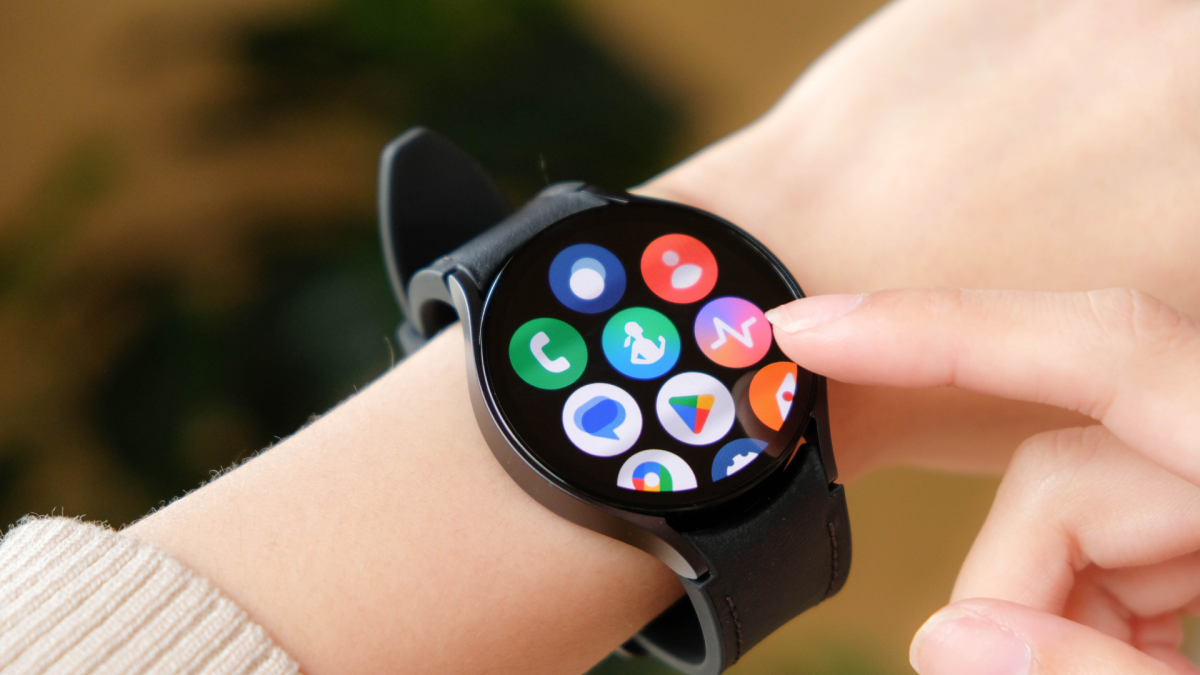
We may earn a commission from links on this page.
Samsung Galaxy Watch users might soon need to open their wallets wider to access the health features they’ve grown accustomed to. Samsung senior vice president Dr. Hon Pak said the company is “exploring” a premium subscription model, according to an interview with Lifehacker sister site CNET. While nothing has been officially launched yet, the writing is on the wall for existing Galaxy Watch owners who have enjoyed comprehensive health tracking without additional fees. Here’s what we know so far.
Samsung says it’s exploring a premium subscription model similar to Fitbit Premium or Garmin’s Connect+. In other words, the company is openly considering a monthly subscription to unlock advanced health features—think “AI coaching” or “personalized insights.”
According to the CNET interview, it looks like new Galaxy Watch purchasers would receive all advanced coaching tools already unlocked with their device. However, existing users—those who bought their watches under the assumption that health features were included—could face the prospect of paying extra to maintain access to tools they previously used for free.
To make an educated guess at Samsung’s subscription strategy, let’s take a look at how other major players handle health features and premium services.
Apple Watch offers a Fitness+ subscription for $9.99 per month. Apple Fitness+ mostly focuses on workout classes and guided fitness content, rather than paywalling the most coveted health data collection. Apple Watch wearers still get the basics like step count, heart rate, and all your core health data for free.
What do you think so far?
Fitbit (owned by Google) has more of a mixed model. Basic activity tracking, sleep monitoring, and exercise logging are free, but advanced insights, personalized guidance, and detailed health metrics require Fitbit Premium ($9.99 per month). However, Fitbit has been transparent about this tiered approach since the service launched.
Garmin is an interesting case, since the company actually adjusted its model in the face of intense user backlash when they announced Connect+ and its $6.99 per month price tag. Garmin clarified that “all existing features and data in Garmin Connect will remain free,” but still—it felt like the end of an era for the company. Now, it’s rare to find any sort of wearable where you don’t have to pay for features in addition to the hardware itself.
For current Galaxy Watch owners, this is a reminder that what seems like a one-time purchase increasingly involves ongoing costs and changing terms of service. It seems like the new norm is simply to factor in potential future subscription requirements down the line. What begins as a “premium feature or two” eventually expands into a broader pattern where previously free functionality becomes subscription-gated. The bottom line is Galaxy Watch owners should prepare for their health tracking to soon come with an additional price tag.
Obé Fitness co-founder Mark Mullett steps into a new executive role as Dear Media adds fitness into its growing lifestyle empire Podcast and media company Dear Media has acquired fitness platform Obé Fitness, adding a fitness and wellness-driven dimension to its existing footprint in commerce and lifestyle content, Variety first reported. The deal sees former Creative Artists […]

Podcast and media company Dear Media has acquired fitness platform Obé Fitness, adding a fitness and wellness-driven dimension to its existing footprint in commerce and lifestyle content, Variety first reported.
The deal sees former Creative Artists Agency agent and Obé Fitness co-founder Mark Mullett joining Dear Media as president of global entertainment and business development. Co-founder Ashley Mills will stay on for a six-month transition period before exiting to launch a new venture focused on the intersection of wellness and education.
Founded in 2018, the celeb-favorite streaming fitness platform raised $15 million in a Series A round in 2021, which included notable backers such as WW International Inc., actress and comedian Tiffany Haddish, Cavu Venture Partners, Wheelhouse Entertainment and Harris Blitzer Sports Entertainment.
The media company is known for a slate of popular shows in categories spanning beauty, health and wellness, parenting, relationships, and true crime, with headliners like “Khloé in Wonderland ” featuring Khloé Kardashian and “Let’s Be Honest” with Kristin Cavallari.
“We continue to expand our owned and operated channels to drive deeper engagement while growing our slate of talent and IP through the creation and acquisition of new programming,” Dear Media CEO and founder Michael Bosstick told Variety. “We’re excited to partner with our talent to create more brand extensions across commerce, long-form content, events, publishing, and whatever else our audience has an appetite for, always with an eye toward our 360-approach of engaging a host’s audience across every platform where their content can be consumed. I’m looking forward to working with Mark to leverage Obé’s tech infrastructure and world-class tech team to create even more opportunities for our shows and audiences to engage.”
Mullett said the acquisition brings together two forward-thinking brands with shared ambitions.
“Dear Media and Obé have always operated ahead of the curve, and we could not be more thrilled to build upon an architecture that will continue to serve our insatiable audience during such an exciting time in the media & entertainment industry’s evolution,” he told the publication.
The sides confirm that Obé will operate as a standalone platform under the Dear Media umbrella.
“What started as a bold vision to make joyful movement accessible grew into something far beyond what we imagined,” Mills said in a statement to Variety. “As I support a seamless transition to Dear Media over the next six months, I’m building my next venture—at the intersection of wellness and education.”
With Les Mills on board, Aviron is betting that the fusion of gaming and fitness can solve home exercise’s biggest challenge: staying engaged Aviron, a maker of gamified, at-home workout machines, is dialing up the energy with a new Les Mills partnership designed to keep home-based workouts from going stale. The collaboration brings more than […]
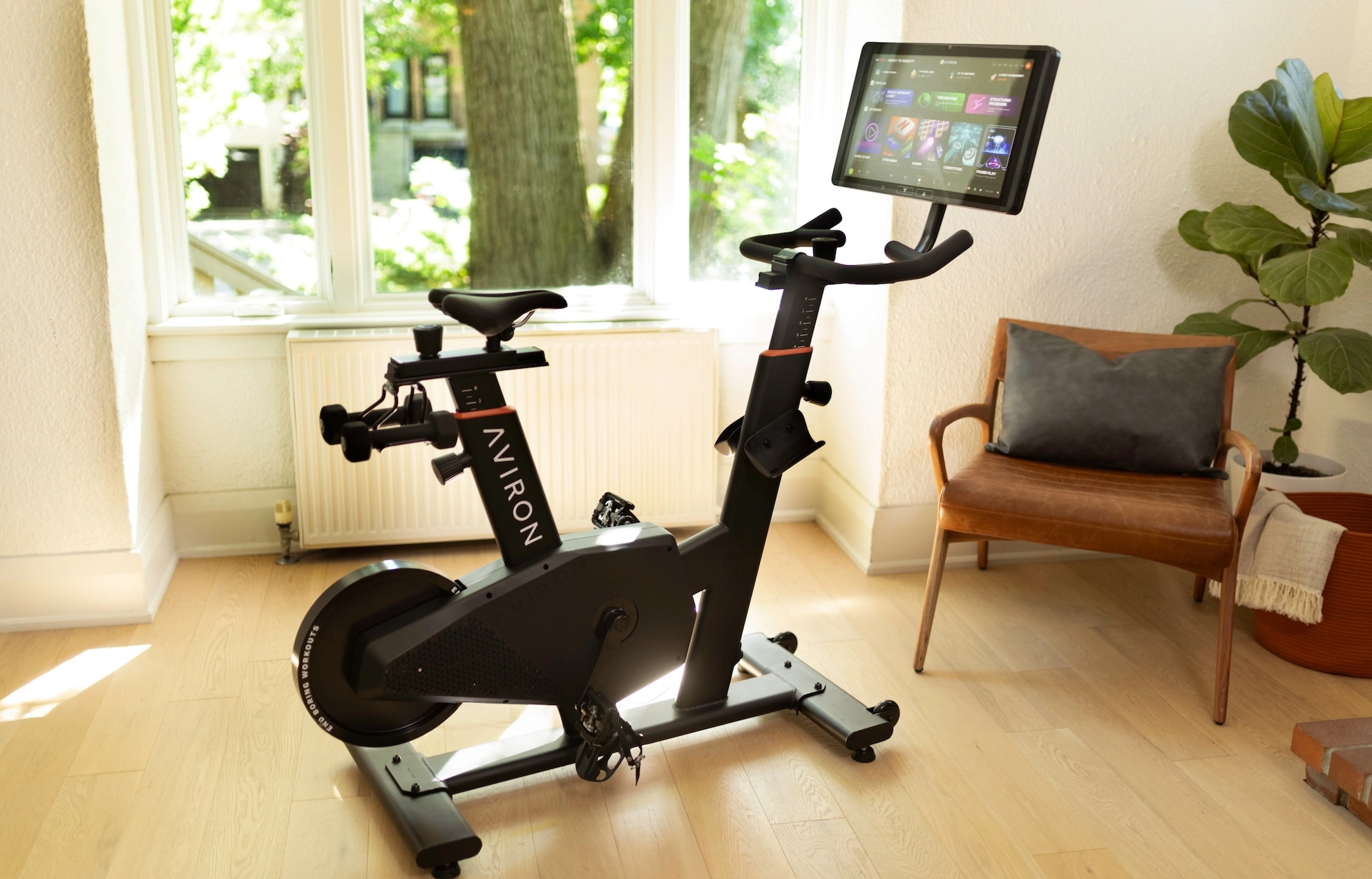
Aviron, a maker of gamified, at-home workout machines, is dialing up the energy with a new Les Mills partnership designed to keep home-based workouts from going stale.
The collaboration brings more than 300 of Les Mills’ science-backed studio classes to Aviron’s gamified fitness platform, pushing the brand beyond its core rowing, running and riding content into a broader training ecosystem that now includes strength, cardio, mobility, dance and cinematic cycling experiences like Les Mills’ The Trip.
“Our partnership with Les Mills is a game-changer for Aviron,” Aviron founder and CEO Andy Hoang said. “We’re redefining home fitness by making it a sustainable habit, and we do that by creating an experience members genuinely look forward to every day. It’s about enjoying the journey, not just the end result, through entertaining workouts, world-class games, and constant variety. By integrating Les Mills’ incredible, science-backed classes, we’re adding even more ways to move, crafting a workout experience so engaging and diverse, you’ll want to show up daily and keep coming back for more.”

Classes are available across Aviron’s connected rowers, Fit Bike and Treadmill, while an upcoming mobile app update will let users stream Les Mills workouts on the go. To keep things fresh, Aviron confirms that it will update the Les Mills library quarterly with new classes designed to keep users engaged.
“Our research at Les Mills has always focused on what truly motivates people to exercise and how to make workouts both effective and enjoyable,” Les Mills head of research Bryce Hastings said. “We see the future of fitness as a blend of science and immersive entertainment. Through our partnership with Aviron, we’re excited to deliver our evidence-based programming in a dynamic new digital format that maximizes motivation and engagement.”
The Les Mills collaboration builds on Aviron’s broader mission to make fitness something users want to do rather than something that they feel they should do. Hoang, who launched the company in 2018, has long been focused on blending gaming into the connected fitness experience. Although Aviron offers traditional classes, scenic rides and even Netflix streaming, its core appeal lies in arcade-style video games designed to keep users locked in. For example, members can smash bricks in “Row Breaker,” battle pirates in “Row to Riches,” or put out fires in “Blaze Breakers” on its rowers.
“When you say the words ‘connected fitness,’ people think of classes. That’s synonymous with connected fitness,” Hoang told Athletech News late last year. “We’re doing it differently. Our unique value proposition is that we’re using gamification.”
Walking is easier than running, but it still comes along with plenty of benefits. Studies show just two minutes of walking around the block helps blood sugar levels rise and fall more gradually and stabilize insulin levels. A brief 10-minute walk could lower blood pressure, and my mood always perks up when I walk my […]

Walking is easier than running, but it still comes along with plenty of benefits. Studies show just two minutes of walking around the block helps blood sugar levels rise and fall more gradually and stabilize insulin levels. A brief 10-minute walk could lower blood pressure, and my mood always perks up when I walk my two little fluffy dogs around the block and see their wagging tails and smiling faces.
When it comes to achieving weight loss, researchers found that walking can help promote weight loss, so it’s worth setting off on foot, even if you’re short on time. Recently, researchers wanted to explore whether incline walking or running is better for burning fat. Incline walking is harder than it looks, and you’ll definitely feel your muscles working, especially those larger leg muscles.

When I was undergoing physical therapy for three months, my physical therapist often had me walk on an incline treadmill at the start of my workout. There are plenty of proven benefits of incline walking, including increasing heart rate and strengthening knee joints. Incline walking challenges your musculoskeletal system. What about when it comes to burning fat? Let’s explore the latest research.
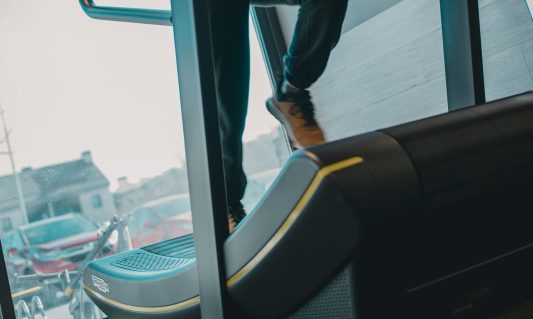
In a study published in the International Journal of Exercise Science, researchers aimed to compare the metabolic responses of the 12-3-30 treadmill workout with self-paced treadmill running. The 12-3-30 workout involves walking on the treadmill with a 12% incline at 3mph for 30 minutes. Participants weren’t allowed to hold on to the handrails. Participants also had to go on runs and stop running when they burned the same amount of calories as their 12-3-30 workouts. In one week, participants had to perform one self-paced run and one 12-3-30 workout. A self-paced run is where you choose your own intensity and speed that feels more comfortable for you.
The researchers measured whether participants obtained more energy from carbohydrates or fat during exercise.
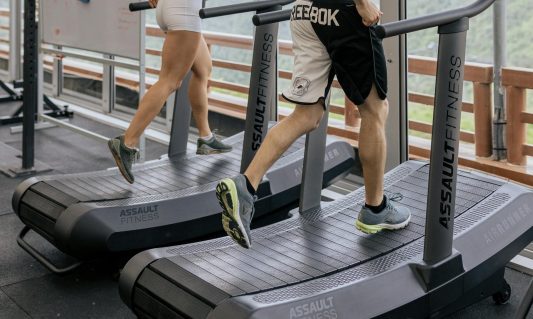
Interestingly, the results showed the following:
Incline walking is a type of zone 2 training that effectively raises your heart rate to around 65-75% of your maximum heart rate.
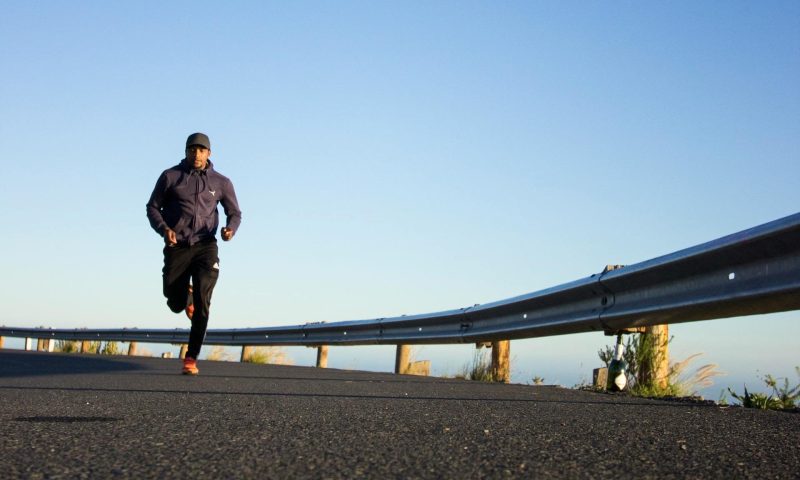
It’s important to note that this is a small study, but it’s interesting to consider how low-intensity cardio can be more effective for burning fat and using fat as a fuel source. That being said, if you’re limited on time or you just really don’t want to spend 30 minutes on the treadmill, running outdoors might be the best choice. You’re more likely to stick to what you enjoy.
As the logistics world is changing fast, tech is at the center of it all in 2025. From warehouse robots to delivery drones, companies are stepping up their game to move things faster, safer, and with less waste. More than 80% of logistics businesses are planning to digitize operations. That means fewer paper logs, more […]

As the logistics world is changing fast, tech is at the center of it all in 2025. From warehouse robots to delivery drones, companies are stepping up their game to move things faster, safer, and with less waste.
More than 80% of logistics businesses are planning to digitize operations. That means fewer paper logs, more real-time tracking, smarter inventory systems, and better planning tools. Logistics software vendors, in turn, adopt the latest AI, IoT, and blockchain practices to make it happen.
Now, let’s take a closer look at the latest technology trends from Acropolium’s custom logistics solutions — one of the leading tech partners for supply chain businesses.
In 2025, robots are picking, sorting, and moving items around automatically. These bots help speed up the process and reduce mistakes, while workers focus on more strategic tasks.
Think conveyor belts with eyes and hands, or robotic carts that follow paths across the warehouse floor. This automation helps companies deal with labor shortages and ramp up productivity, especially during busy seasons.
Moreover, many of these systems come with built-in AI tools that help predict demand so companies know what to stock up on and when.
AI and ML are the logistics technology trends that dig through piles of data to uncover patterns and help companies make smarter decisions: which route will be fastest, where delays are likely, or when a truck might need maintenance.
Companies using AI have cut logistics costs by 15%, reduced overstock by 35%, and improved delivery times and service by over 60%.
In logistics, blockchain creates a digital paper trail that can’t be tampered with. Every product gets a digital ID, showing where it came from, who handled it, and what condition it’s in.
That’s useful for tracking things like food safety, verifying sustainability claims, or cutting down on fake goods.
The Internet of Things (IoT) connects containers, trucks, and pallets to the internet. Attach a sensor, and you can track location, temperature, humidity, or even vibrations in real-time.
It works great news for sensitive shipments like medicine or fresh food. For example, if a truck’s temperature rises too much, alerts go out instantly. You always know where your stuff is, and what shape it’s in. IoT is also used to spot vehicle issues early, so breakdowns don’t ruin delivery schedules.
VR and AR are helping train warehouse staff faster and more safely. With a headset, a new worker can learn how to handle equipment or pack orders correctly without ever setting foot on the warehouse floor.
AR glasses can guide employees with on-screen instructions as they walk around. And for customers, AR can add transparency. Some companies are letting users see live tracking data through mobile apps with interactive maps or 3D views.
Every delivery, order, and inventory move creates data. In the past, this info was underused. Now, with big data tools, logistics teams can spot trends, forecast demand, and avoid slowdowns before they happen.
For example, shipping companies can use weather data to avoid storm delays, or analyze past orders to prep stock in the right regions before demand spikes.
As a result, you can have fewer delays, better stock control, and smarter planning.
From electric delivery vans to route optimization that cuts down fuel use, companies are working hard to reduce their carbon footprints.
Warehouses are also getting makeovers with energy-efficient lighting, solar panels, and smart HVAC systems.
Then there’s reverse logistics: recycling, refurbishing, or reusing returned products. It’s all about extending product life and cutting waste. More than two-thirds of consumers now say they prefer eco-friendly brands, so this trend isn’t going anywhere.
While self-driving trucks and delivery drones won’t replace drivers overnight, they’re already making an impact on short routes and in rural areas.
Drones, for example, are dropping off medicine and small packages where regular deliveries take too long or cost too much. As traffic systems get smarter and laws catch up, we’ll likely see these tools playing a bigger role in how goods move.
A digital twin is basically a virtual model of a physical object or process. In the logistics context, this could mean creating a digital copy of a warehouse or transport route to test “what-if” scenarios before making changes in real life.
Say you’re planning a new delivery route or changing warehouse layout — running simulations on a digital twin can show how it’ll affect time, cost, and efficiency before you spend a dime.
In 2025, logistics is all about working smarter, not harder. With AI, automation, sensors, and virtual models, companies are cutting costs, boosting speed, and reducing waste. And all of that results in more accurate deliveries, greener operations, and a better experience for everyone involved.
Whether it’s a warehouse robot or a flying drone, the future of logistics is here — with the power of technology, it changes the supply chain for the better.


Parents Speak Out As Trans Pitcher Throws Shutout In MN State Quarterfinals


'I asked Anderson privately'… UFC legend retells secret sparring session between Jon Jones …


Oregon track star wages legal battle against trans athlete policy after medal ceremony protest


UFC 316 star storms out of Media Day when asked about bitter feud with Rampage Jackson


NASCAR Weekend Preview: Autódromo Hermanos Rodríguez


Patrick Mahomes in OKC for WCWS, praises NiJaree Canady and Texas Tech


Full 2025 Women’s College World Series Finals Schedule


Greg Sankey fires jab at obstruction rule after controversial WCWS call in Texas vs. Texas Tech


New Michigan State AD J Batt’s priority list: build connections, funds


Report